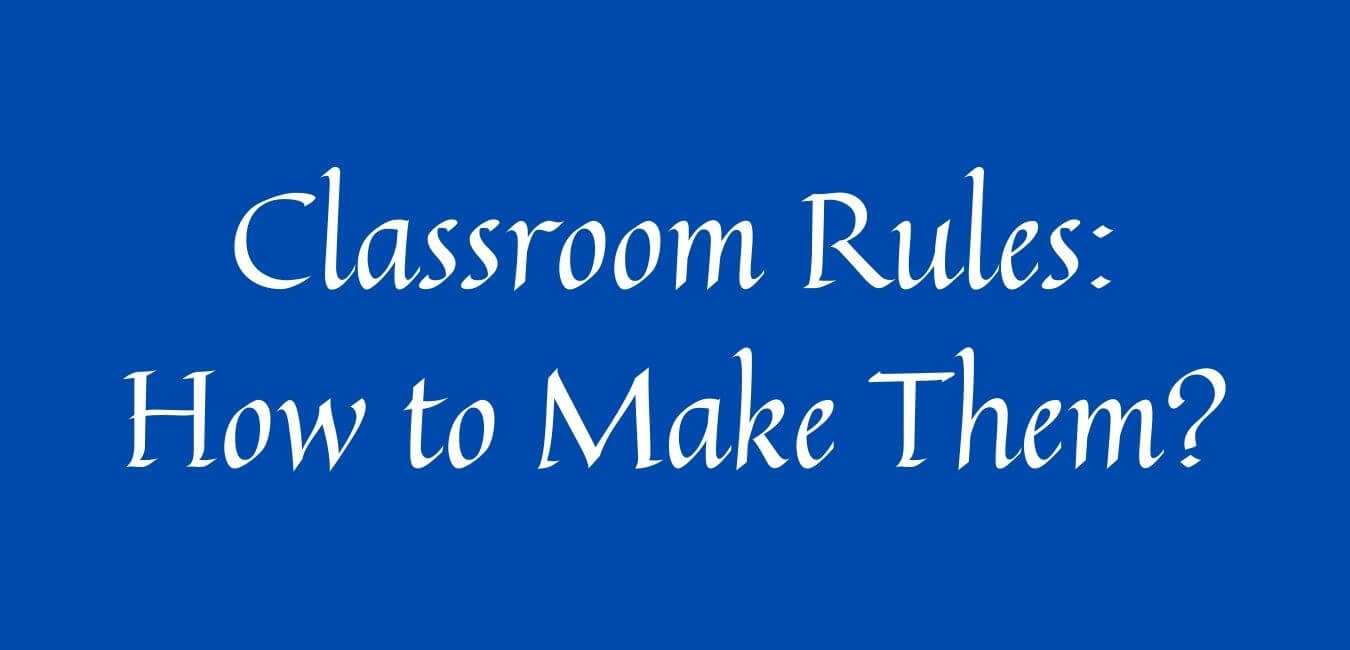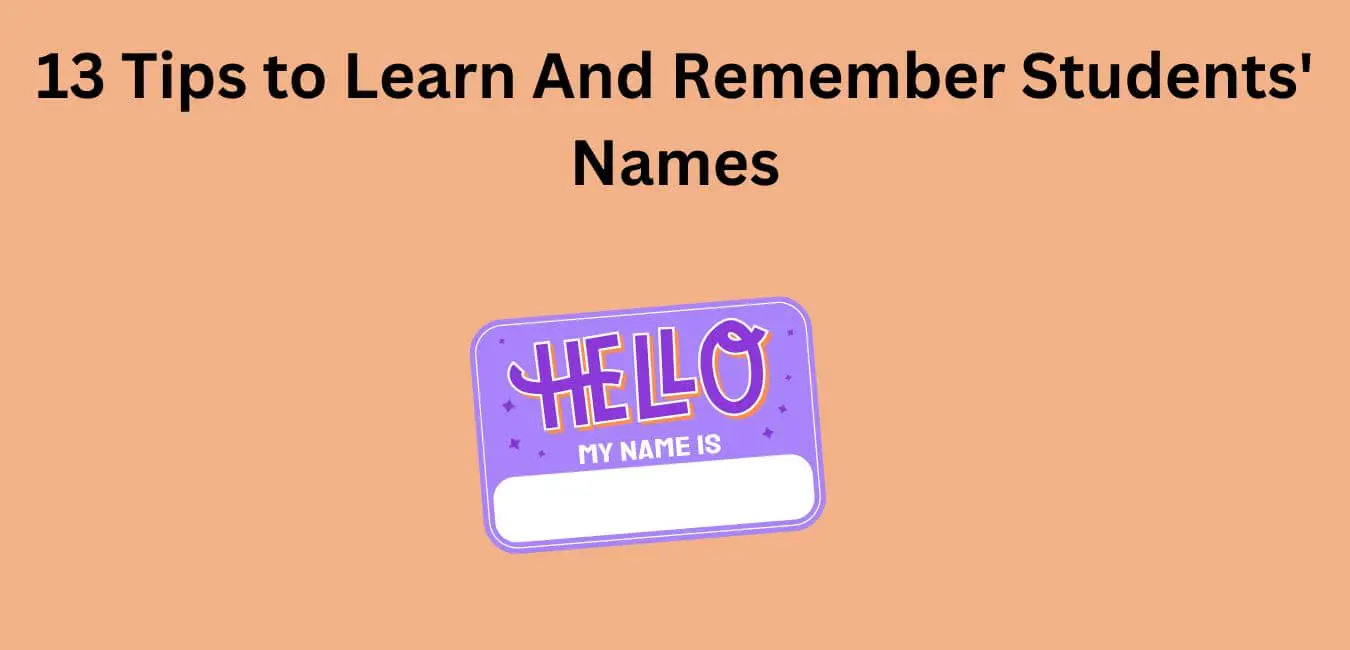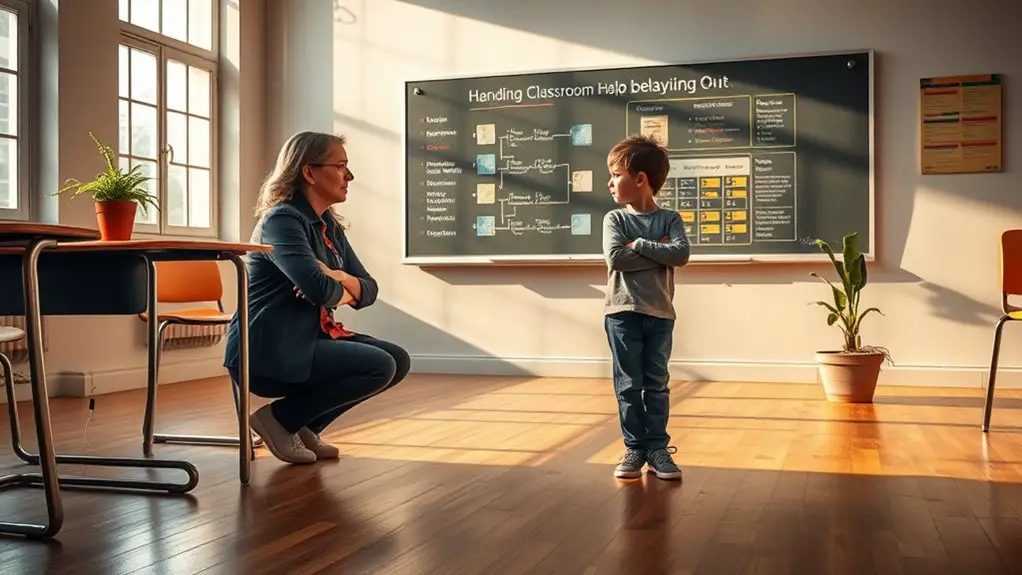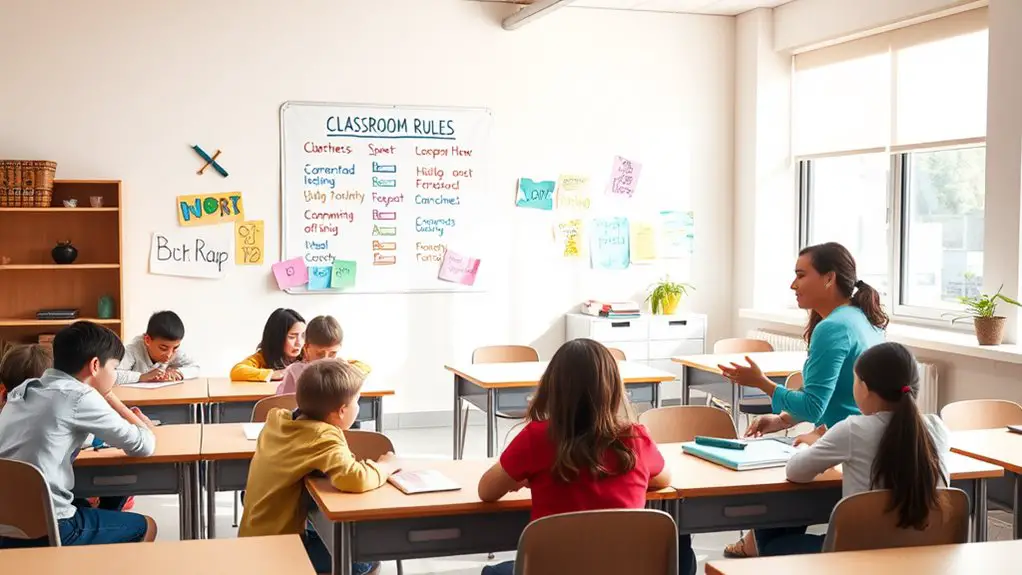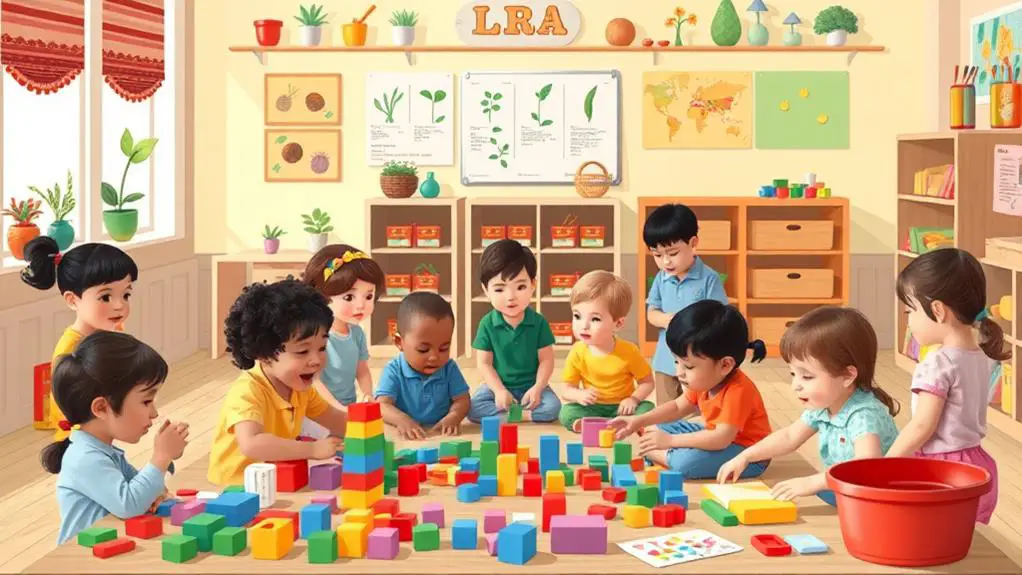Classroom management is a critical part of formal education. That is, you can increase the level of success of your students if you are able to manage your classroom successfully and effectively.
Teachers, both experienced and beginners, work extremely hard to become masters in classroom management.
At the beginning of my career, there were some days I didn’t want to hear the statement, ‘‘There is school tomorrow.’’ This is because I used to struggle to manage some classes on those days.
I think you have had that thought at least once in your career as a teacher.
Over the years, I have learned to manage my classes effectively using some key and proven techniques. One of them is the use of classroom rules.
Classroom rules that are reasonable, positive, simple, clear, enforceable, respectful, and inclusive promote a safe, conducive, and all-inclusive classroom environment for effective learning to take place.
In this article, I explore the important steps to follow when creating effective classroom rules. I have identified 11 critical steps to guide you when trying to design rules for your class.
17 Effective Strategies for Enforcing Classroom Rules
To effectively enforce classroom rules, you need to establish clear expectations for your students. By clearly communicating the rules and the consequences for breaking them, you create a framework for discipline.
Consistency in enforcing these consequences is also crucial, as it helps students understand the importance of following the rules. Additionally, incorporating positive reinforcement techniques, such as rewards and praise, can motivate students to adhere to the rules.
Proactive classroom management, such as implementing routines and procedures, can prevent rule violations in the first place.
Clear Rule Expectations
When enforcing classroom rules, it’s important to clearly communicate your expectations to students. By setting clear rule expectations, you establish a foundation for effective classroom management.
Here are three ways to ensure your students understand and adhere to the classroom rules:
- Clearly articulate the rules: Use simple and concise language to explain each class rule. Avoid using ambiguous terms that may confuse students.
- Provide examples and non-examples: Illustrate the expected behavior by providing both positive and negative examples. This helps students understand the consequences of not following the rules.
- Reinforce the rules consistently: Be consistent in enforcing the rules and follow through with appropriate consequences. This shows students that the rules are non-negotiable and helps maintain a positive learning environment.
Consistent Consequences
In order to effectively enforce classroom rules, it’s essential that you consistently implement appropriate consequences for any rule violations. Consistent consequences play a crucial role in reinforcing classroom expectations and maintaining a positive learning environment.
When you consistently enforce the rule violations with appropriate consequences, you teach students the importance of following the rules and help them understand the consequences of their actions. This not only promotes better classroom management but also helps students develop self-discipline and responsibility.
Consistency in enforcing consequences also ensures fairness and reduces the likelihood of students testing the boundaries. It’s important to clearly communicate the rules and consequences to students at the beginning of the school year and remind them periodically.
Positive Reinforcement Techniques
You can effectively enforce classroom rules by utilizing positive reinforcement techniques. Positive reinforcement is a powerful tool in classroom management as it helps to reinforce desired behavior and motivate students to make better choices.
Here are three effective positive reinforcement techniques that can help address behavior issues and ensure that students understand and follow the classroom rules:
- Verbal praise: Offering specific and genuine praise when students demonstrate the desired behavior can reinforce their actions and encourage them to continue behaving appropriately.
- Rewards and incentives: Providing small rewards or incentives, such as stickers, certificates, or extra privileges, can motivate students to follow the rules and participate actively in the learning process.
- Group recognition: Recognizing and celebrating the whole class’s efforts and achievements can create a positive and supportive classroom environment, where students feel valued and encouraged to uphold the rules.
Proactive Classroom Management
To effectively enforce classroom rules, continue building upon the positive reinforcement techniques discussed by implementing proactive classroom management strategies.
Proactive classroom management involves creating a classroom environment that prevents misbehavior before it occurs. It’s especially crucial in middle school settings where students may be more prone to testing boundaries.
Start by establishing clear and consistent classroom rules that align with your teaching objectives. Incorporate these rules into your classroom management plan and communicate them effectively to your students. Reinforce the rules consistently and promptly address any violations.
Additionally, consider implementing proactive strategies such as arranging the classroom layout to minimize distractions and implementing engaging activities to keep students focused and motivated.
Model Desired Behavior
Demonstrate the desired behavior to students as a model for enforcing classroom rules effectively. By consistently exhibiting the behavior expectations you have established, you reinforce the importance of following the rules.
Here are three ways to effectively model desired behavior in your classroom:
- Be consistent: Consistently adhere to the rules and consequences you have set. This shows students that the rules apply to everyone, including yourself.
- Use positive language: Instead of focusing on what students shouldn’t do, emphasize positive actions and choices. This encourages students to imitate the desired behavior rather than dwell on what they should avoid.
- Provide reinforcement: Recognize and praise students when they exhibit the desired behavior. This reinforces their understanding of the expectations and motivates them to continue following the rules.
Establish Routines and Procedures
Continuing the discussion on effectively enforcing classroom rules, an important strategy is establishing routines and procedures.
In a middle school classroom, it’s essential to have clear guidelines and expectations in place to create a structured learning environment. By establishing routines and procedures, you’re providing a framework for your students to follow, which helps them understand what’s expected of them and how to behave appropriately.
These routines can include daily tasks such as entering the classroom, transitioning between activities, and packing up at the end of the day. By consistently enforcing these routines, students will develop a sense of responsibility and accountability.
Additionally, clearly communicating the consequences for not following these procedures will further encourage students to comply. Overall, establishing routines and procedures is an effective strategy for maintaining a positive and productive classroom environment.
Use Visual Cues
Start by incorporating visual cues to effectively enforce classroom rules. Visual cues can be a powerful tool in a middle school classroom, helping both students and teachers to understand and enforce the rules. Here are three ways visual cues can make a difference:
- Post visual reminders of the classroom rules: Create posters or charts that clearly display the rules in a visually appealing way. This will serve as a constant reminder for students to follow the rules and will help them internalize the expectations.
- Use visual cues to reinforce positive behavior: Create a system where students can earn stickers, tokens, or other visual rewards for following the rules. This will motivate them to continue behaving appropriately and also serve as a visual reminder of their accomplishments.
- Display visual cues that show respect for the property: Use signs or labels to indicate where materials should be stored or how they should be used. This will help students understand the importance of taking care of the classroom and its resources.
Encourage Student Involvement
To further reinforce the effectiveness of enforcing classroom rules, actively involve your students in the process by encouraging their participation and input. By including students in the establishment of classroom rules, you create a sense of ownership and responsibility among them.
Start by discussing the importance of rules and why they’re necessary for a productive learning environment. Encourage students to share their thoughts and ideas on what rules should be in place and why. This won’t only make them feel valued and heard but also help them understand the reasons behind the rules.
Additionally, involve students in the enforcement of the rules by assigning them roles such as rule monitors or peer mediators. By doing so, you promote a sense of mutual respect and responsibility within the classroom, making the enforcement of rules a collaborative effort.
Provide Individual Attention
Involve each student individually in the enforcement of classroom rules by providing personalized attention and support. Here are three ways to achieve this:
- Get to know your students: Take the time to understand each student’s strengths, weaknesses, and individual needs. This will help you tailor your approach when enforcing the rules and provide the necessary support.
- Provide clear expectations: Communicate the classroom rules and expectations clearly to all students. Make sure they understand why these rules are important and how they contribute to a positive learning environment.
- Offer guidance and feedback: Regularly check in with each student and provide guidance on how they can effectively enforce the rules. Offer constructive feedback to help them improve their behavior and show respect for the property of others.
Address Rule Violations Promptly
Deal with rule violations promptly by addressing them directly with the student involved. When a student is breaking rules or engaging in misbehavior, it’s essential to enforce the rule immediately. By doing so, you make the students aware that their actions have consequences and that you take their behavior seriously.
When addressing a rule violation, be clear and concise in explaining why the rule is broken and what the consequences will be. This direct approach sends a strong message that breaking rules won’t be tolerated in your classroom.
Promptly addressing rule violations also prevents the behavior from escalating and sets a precedent for maintaining order and discipline in your classroom. Remember, consistent enforcement of rules is key to creating a positive and productive learning environment.
Foster a Supportive Environment
Create a nurturing atmosphere in your classroom to foster a supportive environment for enforcing classroom rules. When students feel supported and valued, they’re more likely to follow the rules and engage in the learning process. To establish this supportive environment, consider the following:
- Build positive relationships: Take the time to get to know your students and show genuine care and interest in their well-being. This will create a sense of trust and belonging in the classroom.
- Set clear expectations: Clearly communicate the classroom rules and expectations to your students. Make sure they understand why these rules are important and how they contribute to a positive learning environment.
- Provide consistent support: Be consistent in enforcing the rules and provide support when needed. Offer guidance and assistance to students who may struggle with following the rules, and celebrate their successes when they do.
Teach Problem-Solving Skills
To further enhance the effectiveness of enforcing classroom rules, incorporate problem-solving skills into your teaching approach. Teaching problem-solving skills not only helps students understand the importance of following classroom rules but also equips them with the tools to effectively navigate and resolve conflicts.
Start by explicitly teaching problem-solving strategies, such as identifying the problem, brainstorming solutions, evaluating options, and implementing the chosen solution. Encourage students to think critically and collaboratively when faced with rule violations or conflicts. By involving students in the problem-solving process, you empower them to take ownership of their actions and find solutions that align with the classroom rules.
This approach not only reinforces the importance of following rules but also fosters a sense of responsibility and accountability in your students. Incorporating problem-solving skills into your classroom management plan will create a positive and supportive learning environment where students actively participate in maintaining a respectful and rule-abiding classroom.
Use Effective Communication
Establish clear lines of communication with your students in order to effectively enforce classroom rules. Communication plays a crucial role in maintaining a positive classroom environment and ensuring that students understand and follow the rules. Here are three strategies to help you effectively communicate and enforce the rules:
- Clearly explain the rules: Take the time to explain the rules to your students at the beginning of the school year or when establishing the rules. Use language that’s easy to understand and provide examples to clarify expectations.
- Consistently reinforce the rules: Be consistent in enforcing the rules and follow through with consequences when necessary. This will demonstrate to your students that you’re serious about maintaining order and discipline in the classroom.
- Foster mutual respect: Create an atmosphere of mutual respect by listening to your students’ concerns and addressing them in a respectful manner. Encourage open communication and provide opportunities for students to give feedback on the rules and the classroom management plan.
Set Realistic Expectations
Continue fostering a positive classroom environment by setting realistic expectations for your students.
When it comes to classroom rules, it’s important for both students and teachers to understand and agree upon the expectations that will be enforced.
In a middle school classroom, it’s crucial to establish the rules from the beginning of the school year. By involving students in the rule-setting process, they’ll feel a sense of ownership and responsibility.
It’s essential to make sure that the expectations are realistic and attainable for the age and maturity level of the students. Unrealistic expectations can lead to frustration and demotivation.
Utilize Behavior Contracts
Enforce classroom rules effectively by implementing behavior contracts with your students. Behavior contracts are a valuable tool for both teachers and students. They provide a clear framework for enforcing classroom rules and help students understand the consequences of their actions. Here are three reasons why behavior contracts can be beneficial:
- Clear expectations: Behavior contracts clearly outline the specific rules and expectations for student behavior. This helps students understand what’s expected of them and reduces confusion.
- Accountability: By signing a behavior contract, students are taking ownership of their actions and agreeing to abide by the classroom rules. This promotes a sense of responsibility and encourages them to think twice before breaking the rules.
- Consistency: Behavior contracts provide a consistent approach to enforcing the rules. They ensure that consequences are fair and applied equally to all students, creating a sense of fairness and trust in the classroom.
When implementing behavior contracts, it’s important to consider the privacy policy and ensure that all information is handled confidentially and respectfully.
Collaborate With Parents
To effectively collaborate with parents in enforcing classroom rules, you can begin by establishing open lines of communication. Maintaining a strong connection with parents is crucial in ensuring that everyone is on the same page when it comes to enforcing the rules.
Start by sharing the classroom rules and management plan with parents at the beginning of the school year. This will give them a clear understanding of what’s expected from their child. Regularly update parents on any changes or updates to the rules and seek their input if necessary.
Encourage parents to reinforce the rules at home and discuss the importance of consistency between home and school. By working together, teachers and parents can create a unified approach to enforcing classroom rules and promoting a positive learning environment for all students.
Adapt Strategies as Needed
As you collaborate with parents in enforcing classroom rules, it’s essential to adapt strategies as needed to effectively address individual student needs and maintain a positive learning environment. Here are three key reasons why adapting strategies is crucial:
- Establishing the rules: Adapting strategies allows you to ensure that the classroom rules are clear and understandable to all students. This helps in creating a structured and organized environment.
- Enforcement of the rules: By adapting strategies, you can find the most effective ways to enforce the rules. This may involve using different approaches for different students, depending on their behavior and learning style.
- Breaking rules: Adapting strategies also helps in addressing situations where rules are broken. It allows you to provide appropriate consequences or interventions that are tailored to each student, promoting accountability and growth.
Don’t of enforce classroom rules effectively?
When it comes to enforcing your classroom rules effectively, there are certain things you should avoid.
Being inconsistent with consequences
Enforce consequences for rule violations consistently to effectively enforce your classroom rules. Being inconsistent with consequences can undermine the effectiveness of your classroom management. Here are three things you shouldn’t do when it comes to enforcing consequences for rule violations:
- Don’t let minor infractions slide: Even if a rule violation seems small, it’s important to address it consistently. Ignoring minor infractions can send the message that rules aren’t important and can lead to a breakdown in discipline.
- Don’t show favoritism: Treat all students equally when it comes to enforcing consequences. Showing favoritism can create resentment among students and undermine your authority as a teacher.
- Don’t change consequences on a whim: Establish clear and consistent consequences for rule violations from the beginning, and stick to them. Changing consequences arbitrarily can confuse students and make it harder for them to understand the expectations.
Ignoring minor infractions
To effectively enforce your classroom rules, it’s important to address all rule violations, no matter how small, in order to maintain a respectful classroom environment. Ignoring minor infractions can send the message that certain rules aren’t important or can be overlooked. This can lead to a breakdown in discipline and a lack of respect for the rules.
Even though some rule violations may seem trivial, addressing them shows that you’re committed to upholding the standards you have set in your classroom. It also helps students understand that all rules are important and should be followed.
Using excessive punishment
Avoid using punishments that are excessively harsh or disproportionate to the offense committed in order to effectively enforce your classroom rules. When it comes to disciplining students for breaking rules or engaging in misbehavior, it’s important to maintain fairness and a sense of proportionality. Using excessive punishment can have negative consequences and may hinder the effectiveness of your overall classroom management strategies.
Here are three reasons why you should avoid using punishments that are overly harsh or disproportionate:
- Retaliation: Harsh punishments can lead to feelings of resentment and retaliation from students, creating a hostile classroom environment.
- Deterrence: Disproportionate punishments may not effectively deter students from repeating the misbehavior, as the severity of the consequence may not match the offense.
- Trust and Respect: Using excessive punishment can erode the trust and respect between you and your students, making it harder to maintain a positive learning environment.
Applying rules selectively
When enforcing your classroom rules effectively, it’s important to treat all students equally and apply rules consistently to avoid favoritism or bias. As a teacher, it’s crucial to enforce the rule without showing any partiality towards certain students. Treating all students fairly not only promotes a positive and inclusive learning environment, but it also teaches them the importance of respect and equality.
Avoid making exceptions or bending the rules for specific students, as this can create a sense of unfairness among the rest of the class. Consistency is key when it comes to enforcing rules. By consistently applying the rules to all students, you establish clear expectations and boundaries, ensuring that everyone understands the consequences of their actions.
Failing to communicate expectations clearly
Ensure clear communication of your classroom rules and expectations to students from the beginning to avoid ineffective enforcement. Failing to communicate expectations clearly can lead to confusion and misunderstandings among students.
Here are three things you should avoid when trying to enforce your classroom rules effectively:
- Assuming that students already know the rules: Don’t assume that students are aware of your expectations. Take the time to explicitly explain the rules, ensuring that students understand what’s expected of them.
- Using vague language: Avoid using ambiguous or unclear language when establishing the rules. Be specific and precise in your communication to leave no room for interpretation.
- Neglecting to revisit and reinforce the rules: Don’t make the mistake of assuming that once the rules are established, they don’t need to be revisited. Regularly remind and reinforce the rules to ensure they’re fresh in the minds of your students.
Neglecting to involve students in creating rules: Involve students in the process of establishing classroom rules to foster ownership and accountability.
To effectively enforce your classroom rules, it’s important not to neglect involving students in the process of establishing them, fostering ownership and accountability. When creating a classroom management plan for a middle school classroom, it’s essential to include the input of your students.
By excluding them from the rule-making process, you miss out on an opportunity to empower them and make them feel responsible for their own behavior. When students are involved in establishing the rules, they’re more likely to understand and accept them.
This involvement also promotes a sense of ownership, as the rules become a shared agreement between students and teachers. Moreover, when students have a say in the rules, they’re more likely to hold themselves and their peers accountable for their actions.
Not following through on consequences
Consistently and promptly carry out consequences for rule violations to effectively enforce your classroom rules. When it comes to enforcing consequences for misbehavior, it’s important to avoid certain pitfalls that can undermine the effectiveness of your classroom management plan.
Here are three things you shouldn’t do when trying to enforce your classroom rules effectively:
- Delaying consequences: Procrastinating or postponing consequences sends a message to students that the rules aren’t important. Promptly addressing rule violations is crucial for maintaining a positive and orderly learning environment.
- Ignoring minor infractions: Every misbehavior, no matter how small, should be addressed and dealt with consistently. Ignoring minor infractions can lead to a breakdown of classroom discipline and encourage repeated misbehavior.
- Inconsistency in consequences: It’s essential to apply consequences consistently to all students. Inconsistency can create confusion and resentment among students, making it difficult to enforce the rule effectively.
Overlooking positive reinforcement
Don’t overlook the importance of recognizing and rewarding students for following the rules and reinforcing positive behavior when trying to effectively enforce your classroom rules. Positive reinforcement is a powerful tool that can motivate students to continue following the rules and behave appropriately. By acknowledging students’ efforts and achievements, teachers can create a positive and supportive classroom environment.
When enforcing classroom rules, it’s crucial to provide specific and immediate feedback to students, highlighting their adherence to the rules. This could be done through verbal praise, written recognition, or small rewards. By doing so, students understand the value of following the rules and are more likely to repeat the positive behavior.
Reacting impulsively or emotionally
When enforcing your classroom rules effectively, it’s important to maintain composure and respond calmly when addressing rule violations in order to model appropriate behavior. Reacting impulsively or emotionally can undermine your authority and create a negative atmosphere in the classroom.
To avoid this, here are three things you shouldn’t do when trying to enforce your classroom rules effectively:
- Don’t yell or raise your voice: Shouting at students only escalates the situation and can make them feel defensive or intimidated.
- Don’t make personal attacks: Avoid using derogatory or hurtful language when addressing rule violations. Instead, focus on the behavior that needs to be corrected.
- Don’t take it personally: Remember that rule violations aren’t a reflection of your worth as a teacher. Stay objective and address the issue without letting your emotions get the best of you.
Disregarding individual circumstances
To effectively enforce your classroom rules, it is essential to consider each student’s unique circumstances and take into account any extenuating factors that may be influencing their behavior. Disregarding individual circumstances can lead to unfair treatment and a lack of understanding. When enforcing rules, it is important to remember that students may have different backgrounds, abilities, and needs that can affect their behavior. By considering each student’s circumstances, you can create a supportive and inclusive learning environment. Here are some things you should not do when trying to enforce your classroom rules effectively:
| Things to Avoid | Reasons |
|---|---|
| Dismissing individual circumstances | It can lead to unfair treatment |
| Ignoring extenuating factors | It can hinder understanding |
| Applying a one-size-fits-all approach | It may not address individual needs |
| Failing to communicate and listen to students | It can prevent collaboration and problem-solving |
Forgetting to regularly review and reinforce the rules
Regularly reviewing and reinforcing the rules is essential for maintaining consistency in the classroom throughout the school year. By forgetting to regularly review and reinforce the rules, you risk allowing students to forget or become lax in following the established guidelines.
To effectively enforce your classroom rules, it’s important to avoid the following mistakes:
- Neglecting to consistently enforce the rules: If you fail to enforce the rules consistently, students may not take them seriously, leading to a breakdown in classroom management.
- Not following the rules yourself: As a teacher, it’s crucial to lead by example. If you don’t follow the rules you have established, students may question their importance and validity.
- Failing to incorporate the rules into the classroom management plan: The rules should be an integral part of your classroom management plan. Without regular review and reinforcement, the rules may become disconnected from the overall structure and expectations of the classroom.
Why Are Classroom Rules Necessary?
I have been extremely happy for some weeks now. You may be wondering why.
In the middle of this semester, one of our teachers went on leave. So, we had a meeting, and they assigned me to that class.
But I wasn’t quite happy about it. Why? I have heard a lot about that class from their teachers and all were not good.
They were disruptive, oppositional, and annoying. That was what I was told.
To succeed, I spent two weeks developing and implementing classroom rules with the students. This process gave us the following in the classroom:
1. Everyone feels respected: That’s everyone knows when to do what and how. Due to this, every student is respected by every member of the class. This makes everyone want to learn and participate during lessons.
2. The classroom becomes safe for everyone: Our rules from activities or actions that expose members of the class to danger. For example, fighting is not allowed. With that, we have peace of mind to concentrate on our lessons.
3. Teaching and learning have been improved: So far, all the rules have been effective, and everyone performs his/her part of the rules without problems and complaints. Due to that, my workflow well as I expect it to be. Equally, the students are okay with the situations in our lessons. There are no or very minimal disruptions on the part of some students, but the rules always function well.
4. Everyone is responsible for his or her actions: Everyone knows the rules governing our routines, procedures, and norms in the class. Equally, everyone knows the consequences of various behaviors, whether positive or negative. This allows students to become responsible. Thus, they perform what is expected of them and shun what is discouraged in the classroom.
Due to the above, I always rush to enter the class when my time is up. Recently, the class consultant came to the class, during my lesson, for a book. She noticed everyone was busy attending to his/her work without disturbances. She couldn’t hide her excitement and stopped to congratulate them.
Examples of Classroom Rules
Now that we are done with why classroom rules are necessary, let’s turn our attention to some sample classroom rules that you can adapt. There are numerous classroom rules that are used by teachers across the globe depending on their situations. The following are some of them:
1. You should allow others the time to talk.
2. You should respect others and their opinions.
3. You should finish your homework on time.
4. You should listen to your friends before speaking.
5. You should be polite to your friends.
6. You should put your hand up and wait to be called upon to speak.
7. You should treat others’ properties like they are yours.
8. You should always listen to the teacher.
9. You should collaborate and cooperate with your friends.
10. You should be kind and helpful to others.
Those are some examples of classroom rules that teachers use to effectively manage their classrooms. Remember, the number and type of rules to have depends largely on the level of the students and your context (country, region, district, etc.”).
Factors to Consider When Making Classroom Rules
We don’t make classroom rules for the sake of making them. They must be effective and can help us manage our classes with success.
Before they can be effective, there are some factors that you must consider when designing them. That is critical for the success of your classroom management efforts.
These vary according to the level of students and your context. Some of these factors are shown below:
1. Students’ cultural backgrounds
Culture is an important part of everyone’s life. Be mindful of how the rules and their consequences will have on your students.
Rules mustn’t have negative impacts on your students’ cultures and backgrounds.
Today’s classrooms increasingly becoming diverse due to globalization. With this, you must find a way to cater to everyone and his/her culture when setting up your classroom rules.
2. School-wide, district, or municipal-level laws
Your classroom rules must be congruent with those of your school, district, and municipal education services.
That’s, don’t make rules that are against your school’s or district’s rules. Else, you cannot enforce them.
Or even if you succeed in enforcing them, you may be sued if something goes wrong in the process. This is what you don’t want.
3. The Focus of Your Rules
It is important to consider the focus of classroom rules. What do you seek to achieve? How?
Your rules must seek to prevent misbehavior and not to react to them. You must be able to project situations that promote misbehavior and seek to prevent them through your rules.
Also, your rules must balance between positive and negative reinforcement. Your rules must center on encouraging students to behave appropriately.
Should Students Participate in Making Classroom Rules?
There have been several concerns regarding whether to include or invite students to take part in the process of designing the classroom rules.
For me, I have always involved my students throughout the process. I have found that useful.
In fact, it has encouraged my students to be responsible and accountable to the rules.
There are instances where my students remind one another about the rules they themselves have helped create.
Due to that, there has been very minimal disobedience to our classroom rules. So, don’t forget to be democratic about the development of your classroom rules.
What Are Good Classroom Rules?
To be able to create effective classroom rules, it is necessary to know what makes up a good rule. Good classroom rules have the following characteristics:
They are Simple
Your rules must be simple. There must be rules that students can easily obey or follow. To you, they must be rules you can easily enforce. This is key to the success of your rules.
They are Clear
Great and effective classroom rules are clear and unambiguous. That is, everyone must understand the rules. This makes it easier for students to obey them. Use simple and unambiguous words to frame your classroom rules.
They are Enforceable
Classroom rules must be enforceable in order to be effective. You can quickly achieve this if your rules are simple and consistent with the rules of your school and district education services.
Your rules must also be congruent with the conditions in the social environment where your school is located.
They are Reasonable
Can you obey rules that you find to be unreasonable? Even if you do, you will not be happy.
This is what your students will go through if you expect them to obey rules that they don’t find reasonable.
Therefore, try as much as possible to make your rules reasonable for everyone. This must be one of your main goals.
They are Short
Classroom rules must be short and straight to the point. There must not be many such that students forget about some of them.
Depending on your situation, it can be any number. But I recommend you make four to six classroom rules.
Remember, you can always update or revise your classroom rules as the semester rolls by.
They are Respectable
Effective classroom rules are respectable to everyone and his or her situation. Here, rules must respect the diverse group of people in the class irrespective of their background, race, etc.
Don’t make a rule that disparages the cultures and or conditions.
They are Positive
For classroom rules to be effective if they are positive. Here, rules must be constructed in a positive language. This highlights the focus of your rules. Effective rules promote positive and appropriate behaviors.
Refrain from using “not” or “no” when framing your rules. Also, your rules must not emphasize punishment over encouragement of appropriate behaviors.
They are Inclusive
Classroom rules must seek to promote inclusiveness in the classroom. That is important in creating a working community in the class.
Even if one of your rules alienates some students in some way, it will fail. With that, you can fail to manage your students effectively.
Make sure your rules promote inclusiveness.
They Follow the 5Ps of Classroom Rules
Good classroom rules follow the requirements of the 5Ps of making classroom rules. They are Prompt, Prepared, Productive, Polite, and Position.
Your rules must promote the 5Ps in your classroom. That helps prepare everyone and the classroom environment for effective teaching and learning to take place.
Check out our post on the 5Ps of developing classroom rules here.
Step-by-Step Guide to Develop Your Classroom Rules
After discussing the characteristics of good classroom rules, let’s look at how to develop them. The steps below can help you create rules that actually work for your classroom:
Step 1: Assess Your Personality
First of all, I recommend you review your personality before setting classroom rules. This is important because your personality shapes your values and norms.
It further informs what you consider to be appropriate behavior or not.
It, therefore, shapes your philosophy of education and classroom management, which impacts the choice of rules you will prefer in your classroom.
Due to that, I propose you assess yourself again and identify your values, norms, and standards of appropriate behavior.
Step 2: Review Your Philosophy of Education
After understanding your personality, please review your philosophy of education for more inspiration.
Remember, your philosophy of education gives you a theoretical guide to perform your job effectively as a teacher.
That is, it helps you to choose teaching techniques or approaches that you think are effective in achieving the goals of education.
Equally, the philosophy of education should guide you to make your classroom rules. Go here for more information on how to develop your philosophy of education.
Step 3: Review Your Classroom Management Philosophy
After revisiting your philosophy of education, it is necessary to look at your philosophy of classroom management one more time.
Your philosophy of classroom management helps you choose the day-to-day strategies and tactics you adopt to manage students’ behavior effectively.
For example, this informs you to be democratic or not in developing your classroom rules. This further affects the effectiveness of your rules.
That is why I think this process is necessary. If you don’t have a classroom management philosophy yet, please check here for some information on how to develop one.
Step 4: Set Goals and Expectations for the Semester
Now, it is time for you to set educational goals and expectations for everyone. What does everyone aim to achieve by coming to school?
I often ask the question, “Why do we come to school?” Now, brainstorm the purpose of education for everyone.
Let everyone contribute to the conversation by giving his or her purpose of education. Then write down all that is said.
Then polished everything up after everyone had stated their expectations and goals for the semester.
Then post that at a strategic part in your classroom. Make it accessible for everyone.
Step 5: Draft Your Classroom Rules
Now, inform your students that you are going to create rules that will guide them to achieve their goals and expectations for the semester.
Democratically, seek the ideas of every student regarding the rules. In doing that, request to discuss with students how those rules can help you achieve your goals for the semester.
Through this, come out with at most ten key rules. After that, further, debate on the usefulness of all the ten rules and finally reduce them to six.
Step 6: Set Rewards for Obeying the Rules
After drafting the rules, it is important to come out with rewards for obeying the rules.
Just like the rules, allow students to suggest appropriate rewards for following the rules.
Remember, they will suggest outrageous rewards that you can’t fulfill. Don’t worry.
Discuss with them the feasibility of acquiring or providing each reward suggested.
Let everyone understand why some rewards are feasible and others are not.
After achieving consensus, write down the final list of the rewards.
Step 7: Set Consequences for Not Obeying the Rules
Just like the rewards, craft the consequences for disobeying each rule. Remember, there are going to be serious debates regarding some suggested consequences.
It is normal. Just work to achieve consensus. Don’t forget to remove unenforceable consequences.
That is important because your inability to enforce rules makes you lose your power in the class.
Step 8: Teach the Rules
As mentioned earlier, effective classroom rules are those that are understood by everyone in the class community.
To achieve that, you have to teach the rules to the students using creative methods. Through that, you can clear all ambiguities regarding the rules.
You can use postcards and worksheets to make sure everyone understands the rules.
Step 9: Publish the Rules
Write the final list of the rules. Let everyone sign their names on the same paper. Sign after everyone has done that and write the date.
Post the list of the rules on a visible part of the classroom. Make sure everyone can see them clearly.
Step 10: Implement the Rules
Hurray! You have successfully developed your classroom rules.
The next step in the process is to implement the rules. Normally, I give a date when the rules will start working in the class.
Remember to be just, fair, kind, and firm when following through the implementation process. That is critical and if you fail in any, you will likely not succeed in the use of the rules.
Note down issues regarding students’ attitudes towards the rules. These notes are important moving forward. They will form the basis for the review of the effectiveness of the rules.
Step 11: Review Your Process
From time to time, review the progress of the implementation of your rules with students. There is no specific number of times to review your rules. Your situation can shape the number of times you will do it in a semester.
Discuss, with the class, the notes you have been taking about everyone’s attitudes towards the rules. Discuss ways to improve the effectiveness of the rules.
Remove less effective rules and replace them with more effective ones. This is how we can get better at using classroom rules to manage students’ behavior.
Final Thoughts
Classroom rules are one of the key strategies to use in managing students’ behavior in the classroom. Do well to use them appropriately and effectively. However, you must make them appropriately, else they will be ineffective. Follow the guidelines given in this article to improve your success in designing great and effective classroom rules. Check out more of our posts here.

